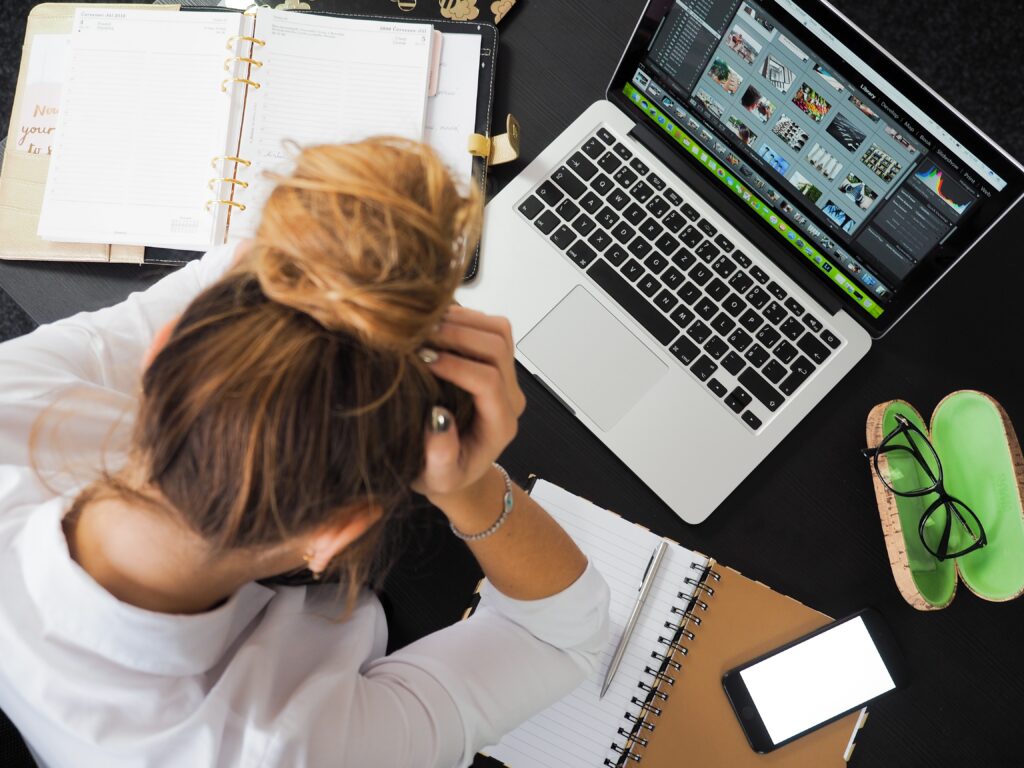Navigating Anxiety: Physical Manifestations
The constant pulsating pain like a pit in your stomach, the trembling of your hands, the feeling of being choked, unable to breathe – anxiety can be a devastating mental illness. I’ve experienced anxiety since I was little, and learning how to cope with it has been incredibly helpful. Navigating anxiety through the physical implications of it has been the toughest. With a chronic disease and anxiety, I’ve realized how connected my mind and body were, and I quickly learned that if I took care of my mental health, I was taking care of my physical health, too.
Understanding the mind-body connection can be crucial to finding ways to cope with stress. The mind-body connection refers to the intricate interplay between our mental and emotional states and the physical sensations and responses they trigger. Our thoughts, feelings, and emotions can directly influence our physiological functions, and vice versa. When it comes to anxiety, this connection becomes particularly evident.

Physical symptoms of anxiety
Anxiety is a psychological and physiological response to stress or perceived threats. It involves feelings of apprehension, unease, and worry about future events or situations. While it is a natural reaction that has evolved to protect us, excessive or chronic anxiety can lead to a range of physical and emotional disturbances – this is when reaching out for support, medication, or other forms of healthy coping become very important.
The science behind anxiety can also help us understand why we react this way to stressors. Anxiety is tied to the body’s “fight-or-flight” response, an evolutionary survival mechanism. When the brain perceives a threat, whether real or imagined, it triggers the release of stress hormones like adrenaline and cortisol. These hormones prepare the body to either confront the threat or escape from it. This response involves a series of physiological changes designed to enhance physical performance and readiness, which can manifest as various physical symptoms. Our body is just trying to keep us safe, but sometimes, it can end up being harmful.
- Rapid Heartbeat and Palpitations: Anxiety stimulates the heart to beat faster and more forcefully. This is due to the increased release of adrenaline, which helps redirect blood flow to the muscles to prepare for action. Palpitations, the sensation of the heart racing or pounding, can occur as a result.
- Muscle Tension and Pain: The body’s tension and readiness for action can cause muscles to contract and remain tense. This can lead to muscle stiffness, aches, and sometimes even tension headaches.
- Shallow Breathing and Shortness of Breath: In response to anxiety, breathing often becomes shallower and more rapid. This rapid breathing can lead to feelings of breathlessness, as the body attempts to supply oxygen to the muscles in preparation for potential physical exertion.
- Gastrointestinal Issues like Nausea and Stomachache: Anxiety diverts blood away from the digestive system to focus on more immediate bodily needs. This can result in symptoms like nausea, stomachaches, and even changes in bowel habits.
- Sweating and Trembling: The body’s response to stress includes increased perspiration, a mechanism for cooling the body during exertion. Trembling or shakiness can also occur as a result of heightened muscle readiness.
- Fatigue and Insomnia: Chronic anxiety can disrupt sleep patterns, leading to difficulties falling asleep or staying asleep. Racing thoughts and worries can make it challenging to relax and enter a restful state, resulting in fatigue during the day.
The physical manifestations of anxiety show how deeply our mind and body are connected, and help us understand where to start in terms of coping with anxiety.

Impact of Chronic Anxiety on the Body
Prolonged anxiety, if left unmanaged, can have a profound impact on overall health and well-being. Beyond its immediate emotional toll, chronic anxiety has been linked to a range of physical health problems. Understanding this connection is crucial in recognizing the importance of addressing anxiety’s physical symptoms to prevent potential long-term health consequences. Prolonged anxiety can also lead to several chronic health issues, including hypertension (high blood pressure), digestive disorders, such as IBS, and a weakened immune system.
Holistic wellbeing is important to practice for prolonged anxiety – look at your body as a whole. Prolonged anxiety is more than an emotional state; it directly impacts physical health. A comprehensive approach to well-being involves managing both the mental and physical aspects of anxiety through techniques such as therapy, relaxation exercises, mindfulness, regular exercise, and a balanced lifestyle. By taking proactive steps to manage anxiety, individuals can promote better overall health and reduce the potential for chronic health issues in the future.
Factors Influencing Physical Expression of Anxiety
The experience of physical symptoms in response to anxiety is not solely a uniform process; it is influenced by a combination of genetic predispositions and individual physiological factors. Genetic variations can determine how an individual’s body responds to stress hormones, influencing the intensity and manifestation of symptoms like rapid heartbeat, muscle tension, and gastrointestinal discomfort.
Lifestyle factors also play a significant role in either exacerbating or alleviating these physical manifestations. A balanced diet, regular exercise, and adequate sleep can help regulate the body’s stress response and improve overall resilience, mitigating the impact of anxiety on physical health. Interestingly, cultural and social influences also shape how anxiety is perceived and expressed physically. Different societies may attribute physical symptoms to anxiety in distinct ways, leading to variations in symptom reporting and coping mechanisms. Cultural norms and social expectations can influence whether individuals openly acknowledge physical symptoms or attribute them to other causes, contributing to the complexity of how anxiety is experienced across diverse populations.

Coping strategies for managing physical symptoms
- Deep Breathing Exercises and Progressive Muscle Relaxation: Techniques like deep breathing and progressive muscle relaxation can help calm the body’s stress response and reduce physical tension.
- Mindfulness Meditation and Yoga: Mindfulness practices and yoga promote awareness of the present moment, fostering relaxation and reducing anxiety’s physical impact.
- Regular Physical Activity: Engaging in regular exercise can alleviate muscle tension, release endorphins, and enhance overall well-being.
- Cognitive Behavioral Techniques: Cognitive behavioral therapy (CBT) offers tools to reframe anxious thoughts and behaviors, promoting healthier perspectives and responses.
- Professional Help: Seeking therapy or medication under the guidance of mental health professionals can provide effective, tailored strategies for managing anxiety.
- Balanced Diet and Hydration: A nutritious diet and staying hydrated support physical and mental health, contributing to better stress resilience.
- Quality Sleep and Sleep Hygiene: Prioritizing sleep and practicing good sleep hygiene can improve overall mood and reduce the impact of anxiety on physical well-being.
- Mind-Body Awareness & Techniques: Techniques like guided imagery, tai chi, and biofeedback promote mind-body awareness, enhancing relaxation and stress management.


